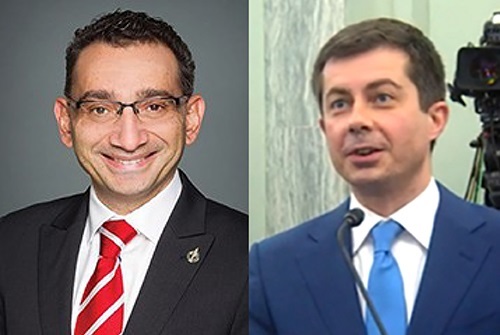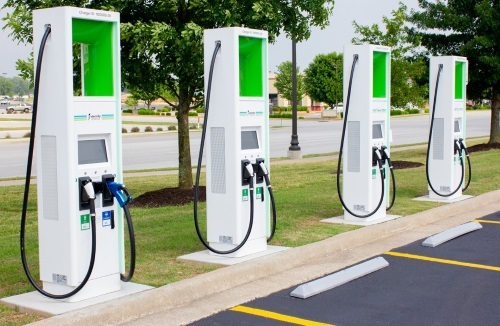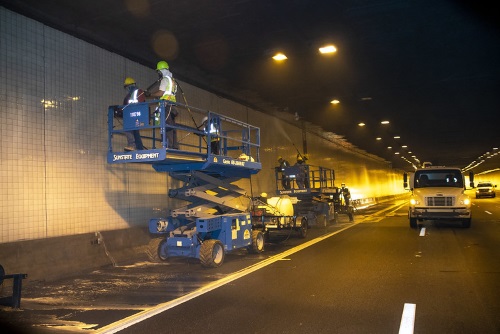FEDERAL ACTION
ASCE Report: U.S. Transportation Infrastructure Needs Investment – AASHTO Journal
House T&I Plans to Add Earmarks to Surface Reauthorization Legislation – AASHTO Journal
Where Does Surface Transportation Funding Stand? – Asphalt Contractor
Oregon’s Rep. Peter DeFazio eyes national infrastructure bill, looks to use earmarks – The Banks Post
How a federal Climate Planning Unit can manage built environment risks and costs – Brookings Institution
COVID-19
COVID-19 Data Dashboard – C2SMART Consortium
NEPA
Biden Administration Revives Consideration of Climate Change Impacts in NEPA Reviews – JD Supra
Biden Should Keep Trump’s Reforms to the National Environmental Policy Act – Earth Institute Columbia University (Opinion)
INFRASTRUCTURE RESILIENCE AND SUSTAINABILITY
Pete Buttigieg Stresses a ‘Fix It First’ Infrastructure Policy – CityLab
Utah Legislature’s Latest Inland Port Bill Creates ‘Bank’ To Fund Infrastructure Projects – KUER
Container CEOs jointly attack US ports for having insufficient infrastructure – ShippingWatch
AIR QUALITY
The Biden Administration Increases the Social Cost of Carbon – Route Fifty
Study Finds Wildfire Smoke More Harmful To Humans Than Pollution From Cars – NPR
Cities across Virginia seek cleaner transportation to minimize air pollution – The Breeze
ENVIRONMENTAL JUSTICE
Metro Transit’s big plans for faster bus routes offer a chance to improve both air quality and racial equity – Sahan Journal
Equity is driving force behind Philly’s new transit plan – Philadelphia Inquirer (Editorial)
NATURAL RESOURCES
EPA Drops Trump-Era Challenge Of Redwood City Salt Ponds Protection – KPIX-TV
The Boise River: nature, development, and water quality shape its future – BoiseDev
11 Facts About Salt Marshes and Why We Need to Protect Them – Pew
California’s Pacific Coast Highway is falling into the ocean. Is this the end of the road for one of America’s most scenic drives? – USA Today
The ‘LitterCam’ that’s watching you – BBC
HEALTH AND HUMAN ENVIRONMENT/ACTIVE TRANSPORTATION
Lime says it will spend $50 million on a huge e-bike expansion – The Verge
Fractured: Distrustful of frackers, abandoned by regulators – Environmental Health News
TRB RESOURCES/ANNOUNCEMENTS
Equity and the Black Experience Webinar – TRB
TRB Webinar: The Ubiquitous Unmanned Aerial Vehicle – UAVs for Infrastructure Monitoring – TRB
FEDERAL REGISTER NOTICES
Ambient Air Monitoring Reference and Equivalent Methods; Designation of One New Reference Method and One New Equivalent Method – EPA (Notice)
Clean Air Act Advisory Committee (CAAAC): Request for Nominations – EPA (Notice)
Local Government Advisory Committee and Small Communities Advisory Subcommittee: Request for Nominations – EPA (Notice)
Air Plan Approval; GA: Non- Interference Demonstration and Maintenance Plan Revision for the Removal of Transportation Control Measures in the Atlanta Area – EPA (Final rule)
Texas: Final Authorization of State Hazardous Waste Management Program Revision – EPA (Final Rule)
Notice of Request To Release Property at Charlotte Douglas International Airport, Charlotte, NC – FAA (Notice)
Public Notice for Waiver of Aeronautical Land Use Assurance; Rogue Valley International-Medford Airport, Medford, Oregon – FAA (Notice)
Federal Transit Administration Limitation on Claims Against Proposed Public Transportation Projects – FTA (Notice)
Taking Marine Mammals Incidental to Ferry Berth Improvements in Tongass Narrows, Alaska – National Marine Fisheries Service (Notice; request for comments on proposed Renewal incidental harassment authorization)
Pipeline Safety: Gas Pipeline Regulatory Reform – Pipeline and Hazardous Materials Safety Administration (Final rule; withdrawal of enforcement discretion; delay of effective date)
Pipeline Safety: Gas Pipeline Regulatory Reform; Correction – Pipeline and Hazardous Materials Safety Administration (Final rule; correction)
Agency Information Collection Activities; Submission to the Office of Management and Budget for Review and Approval; Did You Feel It? Earthquake Questionnaire – U.S. Geological Survey (Notice of Information Collection; request for comment)
Notice of Intent to Prepare an Environmental Impact Statement for Purchase of Next Generation Delivery Vehicles – U.S. Postal Service (Notice)




